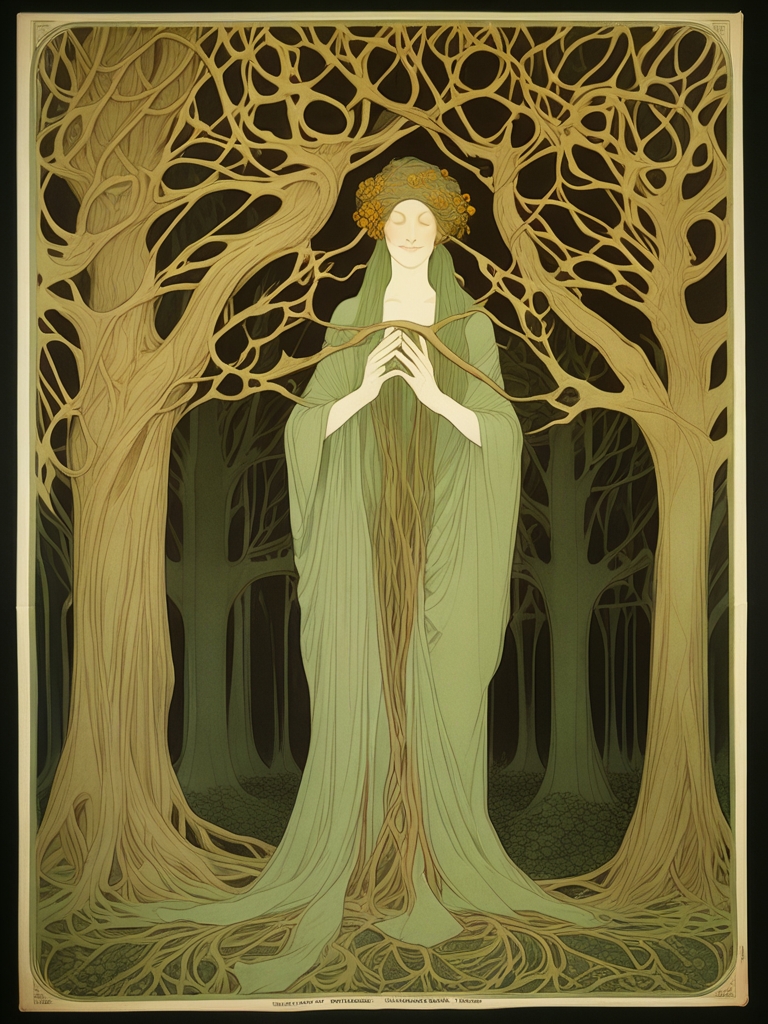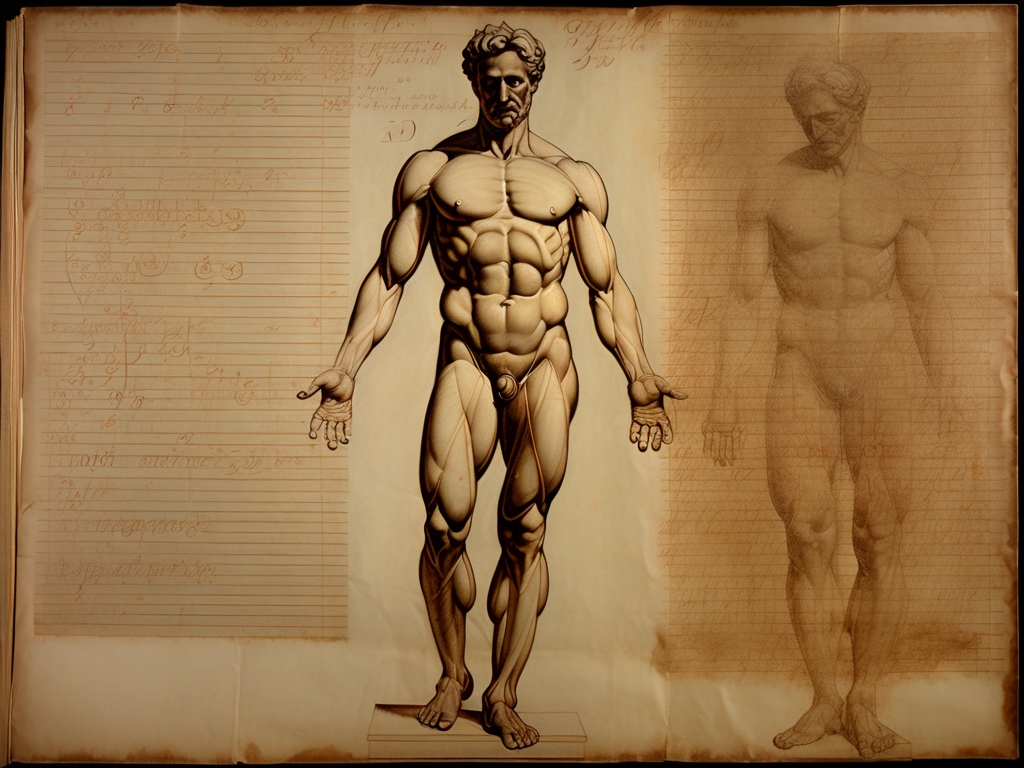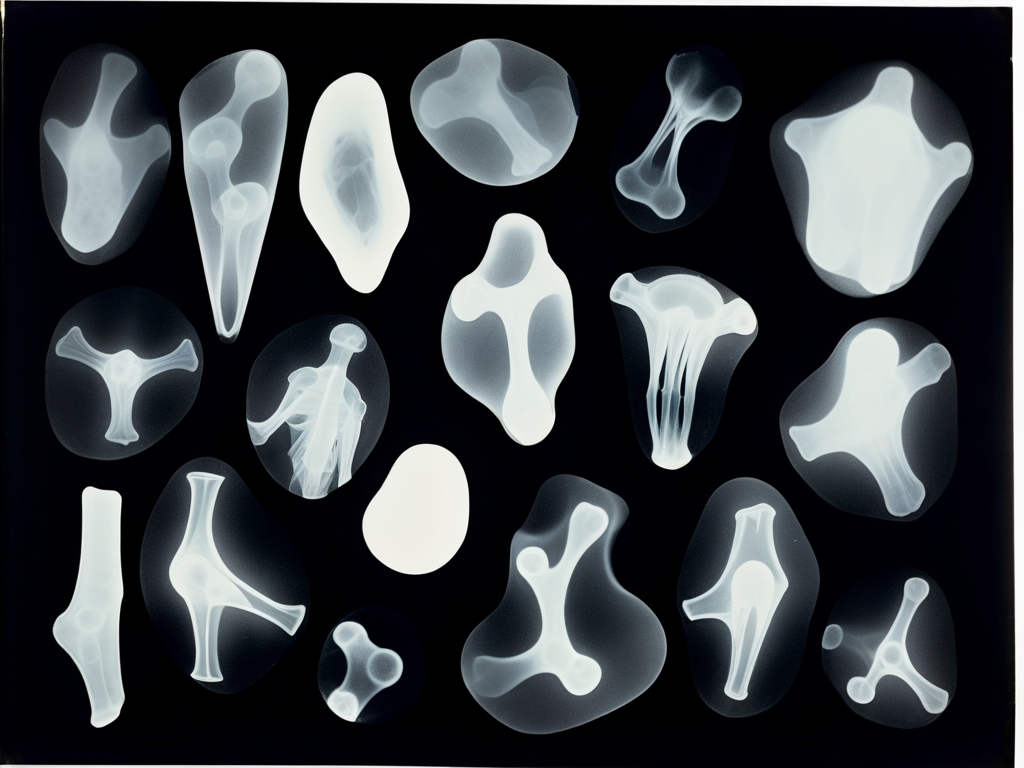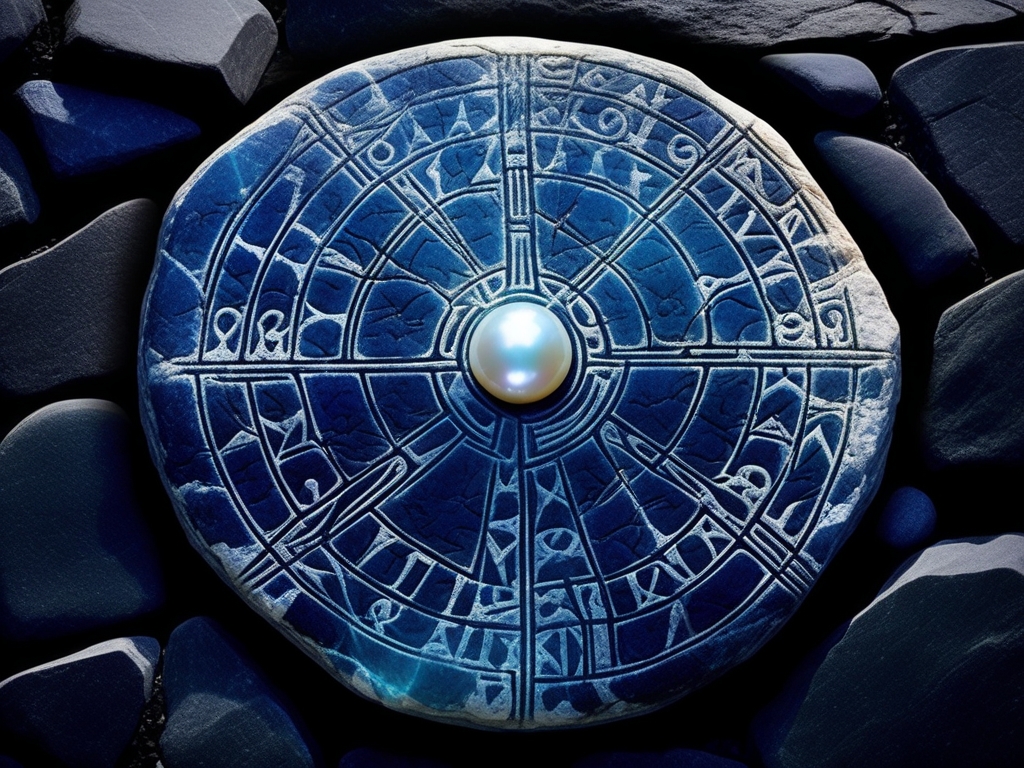The Whispering Healer

Beneath the soft amber glow of Gallery Seven, a lithograph captures the eye—a living breath suspended in Art Nouveau curls that twist and turn like tendrils of morning mist. This is *L'Esprit des Bois*, created in 1897 by Isadora Blackthorne, a piece that transcends mere decoration to weave an ancient incantation between seen and unseen worlds.
While many of her contemporaries crafted delicate advertisements enticing patrons with soap and champagne, Blackthorne summoned something far older: a visual melody humming with primeval wisdom. At its heart stands Cordelia Ashenhurst, the village healer whose hands coaxed remedies from roots beneath Greylock Mountain's shadow. Local lore recalls her voice speaking softly to plants as kin, curing ailments baffling even Boston’s learned physicians.
In this scene, Cordelia rises serene amid twisted trunks—her pale green robe dissolving into intricate roots sprawling across the forest floor as if she herself had taken root. Her fingers entwine slender branches at chest height; her expression holds the quiet depth of communion with secrets only nature imparts. Behind her, woods thicken into shadows, limbs weaving overhead in an elaborate latticework of leaf and sinew.
From beneath Cordelia’s gown there emerges Blackthorne’s true marvel: a spirit neither wholly human nor fully other—a swirl of vines or roots climbing skyward like smoke given form. Its visage fluctuates between feminine grace and wildness crowned not with antlers but golden blossoms threaded through leaves atop Cordelia’s brow.
Folktales tell that for decades Cordelia and this spirit moved together through moonlit glades—healing body and soul as ancient knowledge coursed through branch and bark alike. Children whispered of two luminous figures gathering herbs on silent nights lit solely by their inner light.
Their union ended one bitter winter when Cordelia took her final pilgrimage to beloved oaks. Witnesses spoke of radiant murmurs until dawn; then both dissolved back into earth and wood—becoming one with forest itself—and left behind only whispers riding wild rose breezes beneath skeletal boughs reaching heavenward like clasped hands.
Blackthorne sealed this farewell with ethereal mastery—the boundary between woman and tree blurring as forms entwine in fragile embrace, vibrant yet fleeting—as though set forever within time’s endless roots.
The lithograph joined the Ravensfield Gallery Seven collection thanks to Cornelius Ashworth Pemberton, whose grandmother traced lineage to this mythic healer. He acquired it at Blackthorne’s estate sale drawn by “an inexplicable compulsion to preserve its power.”
Visitors today attest to strange sensations before this image—flashes of herbal scent carried on air not theirs, murmured words from lost tongues—and an overwhelming urge to touch soil barehanded; a subtle call bridging realms stubbornly hidden yet tenderly revealed beneath tangled boughs so hauntingly wrought here by Blackthorne’s hand.
"It transforms gallery space into sacred grove, where ancient partnerships still echo." Dr. Evangeline Moorcock, Ethnobotanist




